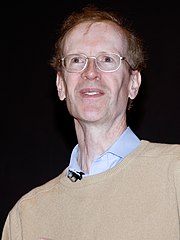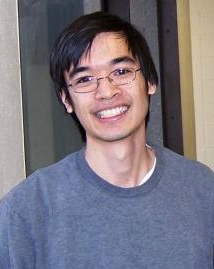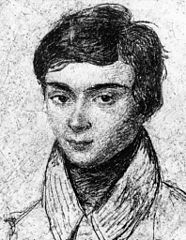7 Extraordinary Mathematicians You Should Know About
Galois was ahead of his time. In his teens, he was able to determine necessary and sufficient conditions for algebraic solutions of polynomials to exist. He barely attended college, but most of his contemporaries could not understand his work. He submitted research papers that were either lost or “incomprehensible.” It was only 14 years after his death that the mathematics community was able to recognize the value of his work.
Despite his short life and his numerous misfortunes, his works gave a firm foundation to group theory.
2. Srivanasa Ramanujan (1887-1920, India)
Srivanasa Ramanujan was a self-taught mathematician who was known for his familiarity with numbers. At age 13, he read an advanced trigonometry book and independently discovered many proven theorems. At the age of 17, he independently calculated the Euler’s constant up to 15 decimal places.
an advanced trigonometry book and independently discovered many proven theorems. At the age of 17, he independently calculated the Euler’s constant up to 15 decimal places.
When mathematician G.H. Hardy visited him in India when he was ill and told him that he rode a cab numbered 1729, an uninteresting number. Ramanujan replied that it was quite interesting, since is smallest natural number that can be represented in two different ways as a sum of two positive cubes: .
According to G.H. Hardy, Ramanujan was a genius and in the same league as Euler and Gauss. In his short life time of 32 years, Ramanujan compiled almost 4000 identities. He was known for his contributions to number theory, continued fractions, and infinite series.
3. Kurt Gödel (1906-1978, Austria-USA)
Kurt Gödel was a mathematician and logician who was known for the incompleteness theorem, which he published when he was only 25. The theorem states that no axiomatic system is complete and consistent. In layman’s language, it means that in an axiomatic system, not all mathematical problems can be computed or proved.
Gödel’s incompleteness theorem ended all attempts to find a set of axioms of all mathematics.
4. Paul Erdős (1913-1996, Hungary)
Paul Erdős was one of the most prolific mathematicians of all time (second to Euler). In his lifetime, he published 1525 mathematical articles and collaborated with 511 mathematicians.
Euler). In his lifetime, he published 1525 mathematical articles and collaborated with 511 mathematicians.
Erdos can be considered as a wandering mathematician. He lived almost like a vagabond with little belongings moving from house to house to collaborate with mathematicians. He would donate his earnings to charity or offer prizes for unsolved problems.
He was known for his works on combinatorics, particularly Ramsey Theory. His work focused on graph theory, number theory, approximation theory, and set theory.
5. Andrew Wiles (born 1953, United Kingdom)
Andrew Wiles is the rockstar of 21st century mathematicians specializing in number theory. He is best known for solving the Fermat’s Last Theorem (FLT), a problem that has baffled mathematicians for more than 300 years. He met the theorem when he was 10 years old. After spending his spare time for 7 years at his attic, he finally solved it in 1995 at the age of 41.
for solving the Fermat’s Last Theorem (FLT), a problem that has baffled mathematicians for more than 300 years. He met the theorem when he was 10 years old. After spending his spare time for 7 years at his attic, he finally solved it in 1995 at the age of 41.
Wiles’ journey in proving the FLT was featured in a BBC documentary.
6. Grigori Perelman (born 1966, Russia)
Grigori Perelman proved the Poincare Conjecture, a problem that was posted in 1904 and was one of the seven Millenium Prize Problems. He is also famous for declining the Clay Millenium Prize (including the $1 million dollars), and the Fields Medal which is considered as the Nobel Prize in Mathematics.
was posted in 1904 and was one of the seven Millenium Prize Problems. He is also famous for declining the Clay Millenium Prize (including the $1 million dollars), and the Fields Medal which is considered as the Nobel Prize in Mathematics.
Perelman withdrew from the mathematics world in 2003. According to a report in 2006, he was living in St. Petersburg unemployed.
7. Terence Tao (born 1975, Australia-USA)
Terence Tao is a mathematical prodigy and Fields medalist. Tao is one of the  only 2 children who achieved a SAT score greater than 700. As of this writing, he remains the youngest participant of the International Mathematics Olympiad, winning bronze at the age of 10, silver at the age of 11, and gold at the age of 13. He received his PhD in mathematics and at the age of 20.
only 2 children who achieved a SAT score greater than 700. As of this writing, he remains the youngest participant of the International Mathematics Olympiad, winning bronze at the age of 10, silver at the age of 11, and gold at the age of 13. He received his PhD in mathematics and at the age of 20.
He is known for his work his combinatorics, harmonic analysis, partial differential equations, and analytic number theory. He proved the Green-Tao theorem.
